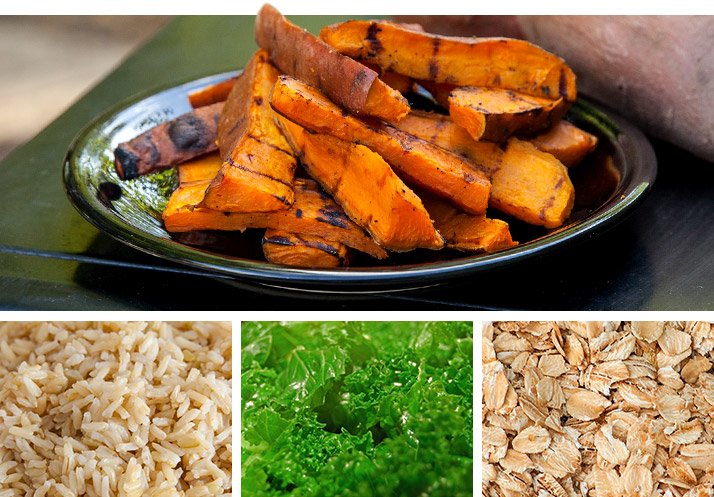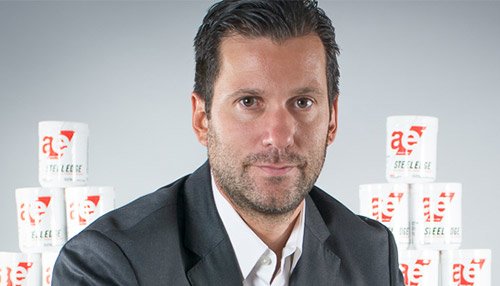
This Is Why You're Not Losing Fat
If your weight loss has plateaued, get back on track and gain an "edge" with advice from one of the top experts in the business.
Lean. Ripped. Shredded. No matter what you want to call it, the process of stripping body fat from your frame and revealing the dramatic muscle beneath isn't easy. It requires patience, dedication, consistency and hard work.
Did we mention patience? Because damn, sometimes that scale will just not budge, despite what you'd rightfully consider superhuman effort.
In those moments of doubt—when you've hit the gym regularly, dieted religiously, avoided temptations, and otherwise applied the perseverance of a monk to your fitness efforts, all to no avail—sometimes an outside perspective is key.
Enter Sebastian Balcombe. With a degree in exercise physiology and a long resume in the arena of sports nutrition, Balcombe has dedicated his life to solving this very problem. As the founder and CEO of Athletic Edge, he has put his extensive background in the training and nutritional sciences to work in formulating products that help men and women achieve their physique transformation goals.
Here, he reveals the four most common and damaging mistakes people make. Balcombe will also show you how to fix those mistakes immediately, so you can fast-track your fat-loss efforts and eliminate the need for a bit of that aforementioned patience!
Error 1 Your cardio isn't geared toward maximum fat burning.
"More is better." It's the mantra that built America, right? So if 20 minutes of cardio is good, 40 must be even better. Heck, let's just round it up to 60, and I'll be ripped in a week!
Ah, if only it worked that way. Yet in reality, if you could plod your way to a great body—and catch up on your favorite shows in the process—everyone in your gym who camps out on the cardio equipment for hours at a time would be spectacularly lean.
In the case of cardio, more is not always better. In fact, it can be wasteful at best, and counterproductive at worst, as you often end up compromising your muscle mass without ever adequately tapping your fat stores for energy. Instead, you'll want to drastically cut down your cardio sessions while ramping up your intensity to maximum levels.
"If somebody really wants to drop and burn body fat in the quickest, most efficient way possible, and they have the drive to undergo it, there's nothing better than high-intensity interval training," Balcombe explains. "Nothing is as effective as HIIT. There's no exercise protocol I would recommend more to someone who wants to get lean."

HIIT alternates periods of high intensity and low intensity in a repeating pattern. For instance, if you're running, you'll do 15 seconds of an all-out sprint followed by 15 seconds of a slow recovery jog or walk. The better your fitness levels, the further you can push yourself during the active phase—you can do 15/15, 30/30, 45/45, or even 60/60, although a 60-second all-out phase is definitely pushing the upper limits of your short-term abilities and may cause you to fatigue early in your workout. Someone new to HIIT can also consider a 15/45 work-to-rest ratio, which is obviously easier because of the longer low-intensity periods.
"These alternating periods of intensity target both type I and type II muscle fibers, enhancing not only overall aerobic conditioning but muscular strength and power too," Balcombe says. "HIIT not only helps you burn fat, you'll also spare muscle because of the shorter workout periods, as you'll spend less time in a catabolic exercise state."
To do HIIT right, you'll need to approach cardio like you do your toughest lifting sessions. That means no reading, no watching TV, no chitchat; you're waging war, and every rep—or in this case, interval burst—counts.
"Back when I was following a HIIT program on a regular basis, I would either set aside a whole training session for it, even though the sessions are only 10 or 15 minutes, or I would do it at the beginning of a regular weight workout," Balcombe says. "I personally loved to do it before I worked out with weights, because you go into your weight workout with all the fat-burning hormones like epinephrine and norepinephrine elevated, giving you an additional fat-burning effect long after your cardio session is over. Of all exercise protocols, HIIT just annihilates all others in terms of how much fat you burn, both during your workout and afterward."
How to HIIT
| Beginner | |
|---|---|
| Frequency | 2-3 times per week |
| Warm-up | 5 minutes |
| Sets/Time | 5-9 sets,* 5-12 min. |
| Intervals | 15-20 sec. high intensity 45-60 sec. low intensity |
| Cool-down | 5 minutes |
| Intermediate | |
| Frequency | 2-4 times per week |
| Warm-up | 5 minutes |
| Sets/Time | 10-12 sets, 10-18 min. |
| Intervals | 30 sec. high intensity 30-60 sec. low intensity |
| Cool-down | 5 min. |
| Advanced | |
| Frequency | 3-4 times per week |
| Warm-up | 5 minutes |
| Sets/Time | 15-25 sets, 11-18 min. |
| Intervals | 30 sec. high intensity 15 sec. low intensity |
| Cool-down | 5 min. |
* One set includes the high and low intensity components; so a 30-second work-to-rest interval would mean each set is 1 minute.
Error 2 Your eating is out of proportion.
With HIIT in your repertoire, you'll have taken a great leap forward in your training efforts. But that's not even half of the equation if weight loss is your goal, Balcombe warns. "Exercise has a very small impact on fat loss compared to dietary changes," he says. "More than any training or supplementation changes you make, diet has by far the most major effect on weight loss. And the biggest mistake I've seen people make nutritionally is [eating] portion sizes [that] are so out of whack."
Blame it on restaurants—or your well-meaning family members—who heap dinner plates with food, throwing off our ability to eyeball a proper serving of just about anything, from steak and potatoes to breads and cereals.
"People may think they're eating a normal portion, but in reality they're eating 3-4 times what they should be," Balcombe says. "It's the most important part of weight loss, and it's the one part people have the least awareness of. They'll instead focus on the next level, which is looking at things like macronutrient ratios and food types. Of course, those other aspects have an effect, but when you're overconsuming calories, the ratios don't make much of a difference."
The solution, thankfully, is simple, and temporary as well. Balcombe recommends a set of measuring cups and spoons. "You don't need to actually weigh all your food, just put it in a measuring cup before plating it," he suggests. "Over the course of a few weeks, you'll start to get a real feel for what a proper portion is, and eventually you'll no longer need the measuring devices to know what you're doing."

Error 3 You're not minding your ratios.
"Once you have portion control down, you can start experimenting with macronutrient ratios," Balcombe says. He recommends that 15-20 percent of overall calories come from fat—mostly the healthy unsaturated variety found in foods like nuts, fish and avocadoes. The rest will come from protein and carbohydrates.
How much of each? Well, that depends on you. "It comes down to your lifestyle and training," Balcombe says. "For instance, if you're doing HIIT regularly, you won't be able to handle it if you're going low carb. When I first started HIIT, I was on a diet of no more than 50-70 grams of carbs per day, and I just couldn't pound out the interval sessions. So I had to crank up my carbs."
Balcombe suggests a 2:1 carbohydrate-to-protein ratio for people on a HIIT program, with the carbs consisting mainly of slow-digesting carbs. "I don't use the terms 'complex' or 'simple' carbs, because they don't really mean much," he says. "You have complex carbs like maltodextrin that break down fast and behave just like a simple sugar, for instance. So forget about simple and complex, and just rely on slow-digesting carbs as your main source." Options include sweet potatoes, brown rice, green leafy vegetables, and steel-cut oatmeal.
The one exception, where a fast-digesting carb is preferred, is within the 30-minute pre-workout window. "That can include anything from a Gatorade to a dextrose drink to maltodextrin or waxy-maize starch, which might be included in a pre-workout supplement," Balcombe says. "Having carbs that break down faster in this time is okay because your body is chopping through massive amounts of glycogen (energy) during these workouts."

Error 4 You're not taking full advantage of scientific advancements.
"Even though I run a supplement company, we don't pretend that these products are a magic bullet," Balcombe says. "We want people to have proper expectations, which is that they can lose weight from dieting and exercise. A well-designed supplement, meanwhile, will help give you an extra edge in propelling your results forward."
When it comes to choosing a fat-loss supplement, look for research-backed ingredients like green tea extract, caffeine, and yohimbine, all of which have been shown to increase energy expenditure and accelerate fat loss. "Green tea extract—specifically its level of epigallocatechin-3-gallate, or EGCG—has an impact on caloric expenditure, while caffeine improves energy and alertness," Balcombe explains.
Natural plant extracts, like Sphaeranthus indicus and Garcinia mangostana, may also help to fuel your fat-loss efforts. In a randomized, double-blind, placebo-controlled study, subjects taking 400 milligrams of Meratrim (an ingredient composed of both Sphaeranthus and Garcinia) two times a day (for a total of 800 milligrams) showed significant weight loss in as little as two weeks.1

"At eight weeks, subjects on Meratrim reduced their waist and hip circumference," Balcombe adds. "This research suggests these benefits are being brought about through Meratrim's ability to partially block fat cells from both the uptake and the formation of fat."
References
- Stern, J. S., Peerson, J., Mishra, A. T., Mathukumalli, V. S. R., & Konda, P. R. (2013). Efficacy and tolerability of an herbal formulation for weight management. Journal of Medicinal Food, 16(6), 529-537.


